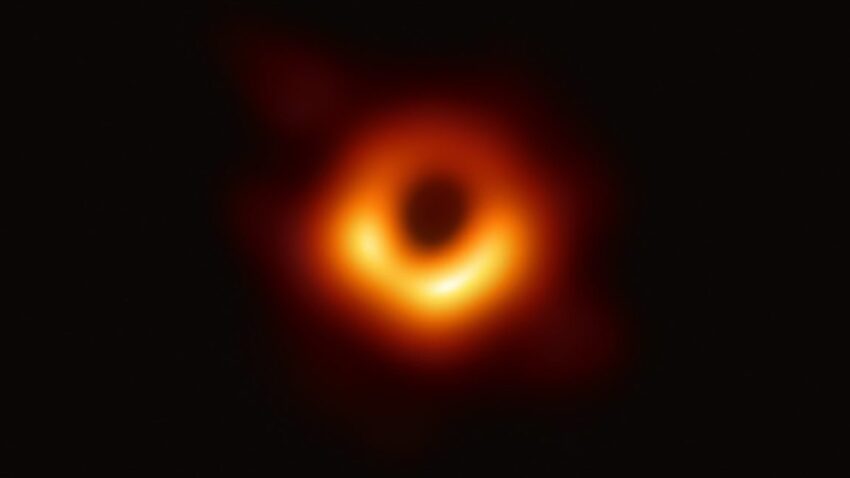
next-generation black hole imaging may help us Recent advancements in black hole imaging technology may provide critical insights into our understanding of gravity, potentially allowing scientists to rule out certain models that challenge Einstein’s theory of general relativity.
next-generation black hole imaging may help us
The Event Horizon Telescope: A Milestone in Astronomy
The Event Horizon Telescope (EHT) has made significant strides since it first unveiled the groundbreaking images of a black hole’s immediate surroundings in 2019. This global collaboration of radio telescopes effectively created a planet-sized observational array, enabling astronomers to capture unprecedented details of black holes. The initial image of the supermassive black hole at the center of the galaxy M87 marked a monumental achievement in astrophysics, providing visual evidence of black holes that had previously existed only as theoretical constructs.
Since that landmark moment, the EHT has continued to enhance its imaging capabilities, improving resolution and refining the details of the extreme environments governed by intense gravitational forces. The implications of these advancements extend beyond mere visual representation; they open new avenues for understanding the fundamental laws of physics, particularly the nature of gravity itself.
Gravity: A Fundamental Force with Mysteries
Gravity, as described by Einstein’s general relativity, is a fundamental force that governs the motion of celestial bodies and the structure of the universe. However, the theory faces significant challenges, particularly in its incompatibility with quantum mechanics. While general relativity excels at explaining large-scale phenomena, it struggles to integrate with the principles governing subatomic particles. This disconnect has led physicists to explore various alternative theories of gravity that attempt to address these inconsistencies.
The Quest for Alternative Theories
In light of the limitations of general relativity, researchers have proposed numerous alternative models of gravity. These theories aim to address unresolved issues such as dark matter and dark energy, which constitute a significant portion of the universe’s mass-energy content yet remain poorly understood. Some of the notable alternative theories include:
- Modified Newtonian Dynamics (MOND): This theory proposes modifications to Newton’s laws to account for the observed rotation curves of galaxies without invoking dark matter.
- TeVeS (Tensor-Vector-Scalar Gravity): An extension of MOND that incorporates additional fields to explain gravitational phenomena.
- f(R) Gravity: A class of theories that modifies the Einstein-Hilbert action to include functions of the Ricci scalar, potentially explaining cosmic acceleration.
Each of these theories presents unique predictions and implications, particularly in extreme gravitational environments like those surrounding black holes. The challenge lies in identifying observable differences between these alternative models and general relativity, especially given that general relativity has proven remarkably successful in explaining a wide range of phenomena.
Black Holes as Testing Grounds for Gravity Theories
Black holes represent some of the most extreme environments in the universe, characterized by intense gravitational fields that can amplify the differences among various gravitational theories. This makes them ideal candidates for testing alternative models of gravity. A group of physicists has recently undertaken the task of investigating whether the next generation of telescopes could detect these subtle differences, potentially ruling out certain theories that do not align with observational data.
The Role of Next-Generation Telescopes
Advancements in telescope technology are poised to revolutionize our understanding of black holes and gravity. The next generation of telescopes, including the planned upgrades to the EHT and other observatories, will enhance our ability to observe the intricate details of black holes and their surrounding environments. These upgrades aim to improve imaging resolution and sensitivity, enabling scientists to capture phenomena that were previously beyond reach.
One of the primary objectives of these next-generation telescopes is to examine the behavior of matter and radiation in the vicinity of black holes. By analyzing the dynamics of accretion disks, jets, and other features, researchers hope to uncover discrepancies that could indicate the presence of alternative gravitational effects. For instance, certain theories may predict variations in the motion of matter near a black hole that differ from the predictions of general relativity.
Challenges in Detecting Differences
Despite the promise of next-generation telescopes, detecting differences between general relativity and alternative theories of gravity poses significant challenges. General relativity has proven to be a robust framework for understanding gravitational phenomena, and any alternative theory must demonstrate observable deviations in a highly subtle manner. This requirement necessitates precise measurements and advanced analytical techniques.
Moreover, the extreme conditions near a black hole can complicate observations. Factors such as gravitational lensing, Doppler effects, and the influence of magnetic fields can obscure the signals that researchers seek to measure. As a result, scientists must employ sophisticated modeling and simulation techniques to interpret the data accurately.
Implications for Fundamental Physics
The potential to rule out certain models of gravity through black hole imaging carries profound implications for our understanding of the universe. If next-generation telescopes can successfully identify discrepancies between general relativity and alternative theories, it could reshape our understanding of fundamental physics. This process may lead to the development of a more comprehensive theory that unifies gravity with quantum mechanics, addressing long-standing questions about the nature of reality.
Additionally, the insights gained from studying black holes could inform our understanding of dark matter and dark energy. If certain alternative theories can explain these phenomena more effectively than general relativity, it may prompt a reevaluation of our current models and assumptions about the universe’s composition.
Stakeholder Reactions and Future Directions
The scientific community has expressed a mix of excitement and caution regarding the potential of next-generation black hole imaging to advance our understanding of gravity. Many physicists recognize the importance of exploring alternative theories and the role that observational data can play in shaping theoretical frameworks. However, there is also an acknowledgment of the challenges involved in distinguishing between competing models.
As the EHT and other observatories continue to refine their capabilities, researchers are optimistic about the prospects for future discoveries. Collaborative efforts among astrophysicists, theoretical physicists, and astronomers will be crucial in interpreting the data and drawing meaningful conclusions. The ongoing dialogue between theory and observation will ultimately guide the field toward a deeper understanding of gravity and its implications for the cosmos.
Conclusion
The next generation of black hole imaging technology holds the potential to revolutionize our understanding of gravity and the fundamental laws of the universe. By exploring the extreme environments surrounding black holes, researchers may uncover subtle differences between general relativity and alternative theories, paving the way for a more comprehensive understanding of gravity. As scientists continue to push the boundaries of observational astronomy, the insights gained from these endeavors could reshape our understanding of the cosmos and our place within it.
Source: Original report
Was this helpful?
Last Modified: November 7, 2025 at 4:36 am
2 views















